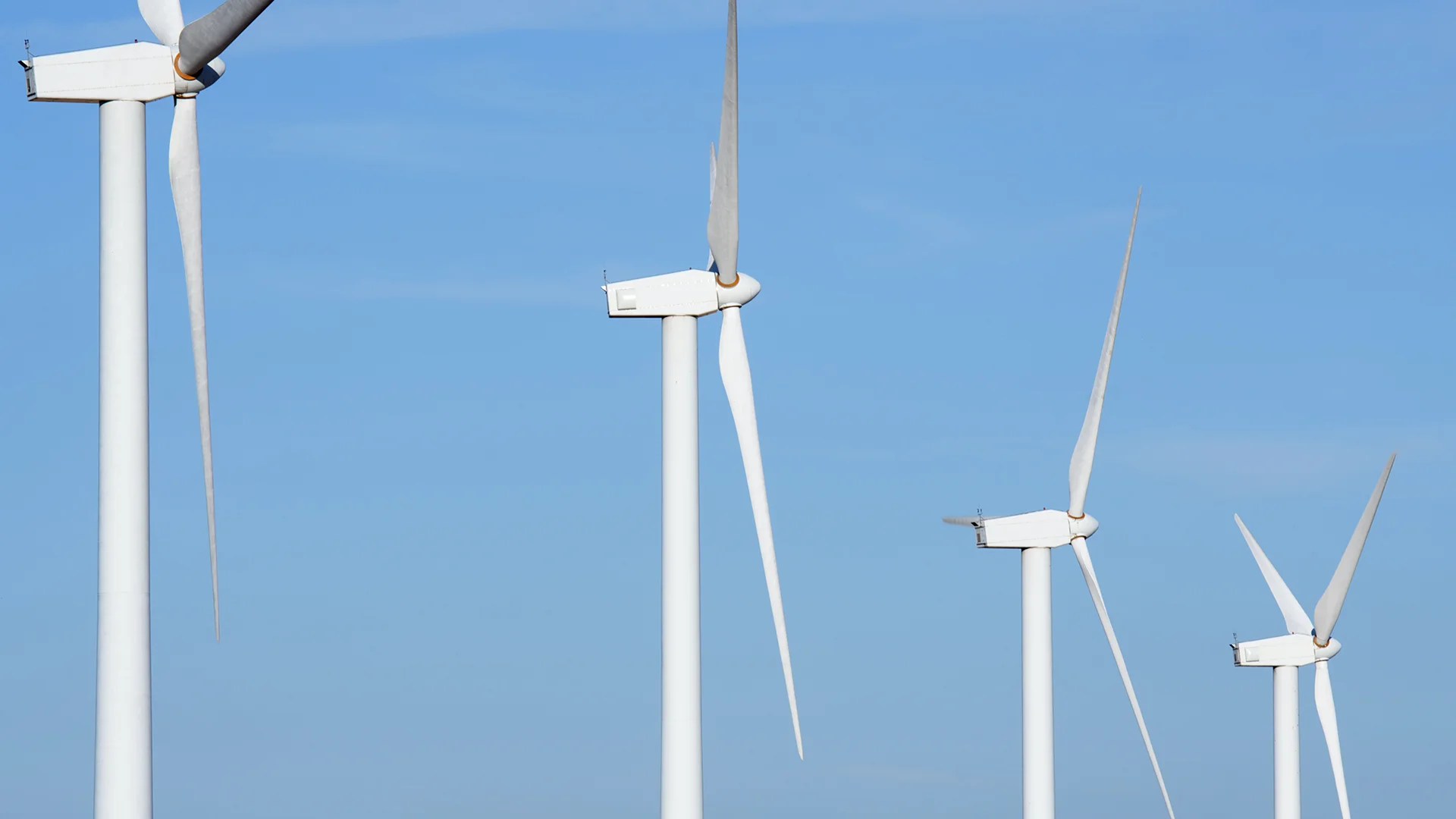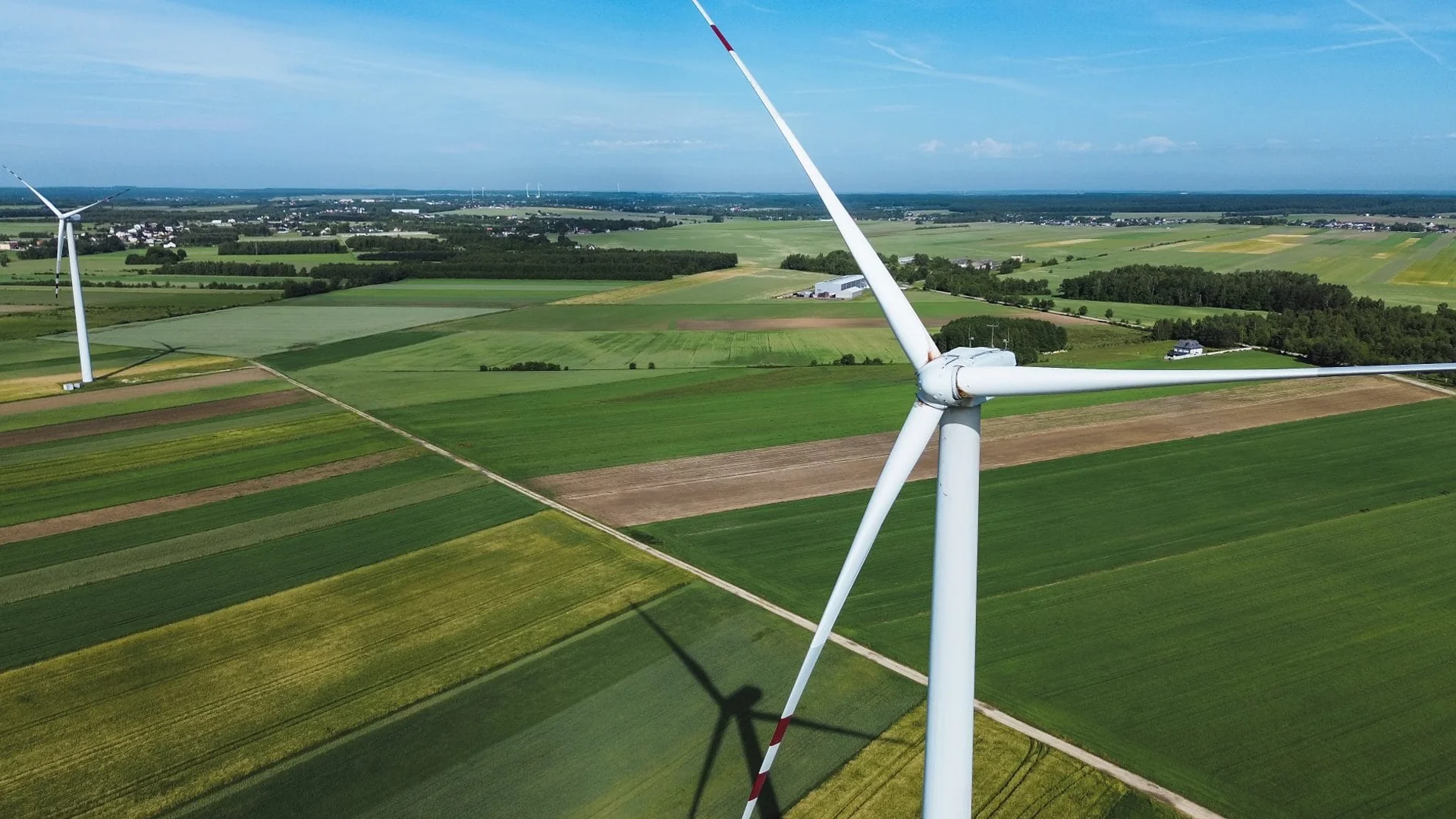Revolutionising Wind Turbine Maintenance with Drone Inspections
Imagine standing atop a wind farm, where the turbines spin gracefully against the backdrop of a clear blue sky. Now, picture the maintenance of these towering giants being transformed by drone inspections. This innovative technology is not just a trend; it’s reshaping the future of wind turbine maintenance, making it safer, faster, and more efficient.
In this blog post, we delve into the exciting world of Drone Inspections: The Future of Wind Turbine Maintenance. As the wind energy sector continues to grow, understanding this cutting-edge method becomes crucial for those involved in wind turbine services and maintenance. We’ll explore how drone inspections enhance operational efficiency, reduce costs, and significantly improve safety standards.
Drone inspections involve the use of unmanned aerial vehicles (UAVs) equipped with advanced imaging technology to assess turbine condition from unique angles. This method not only minimises the risks associated with traditional inspection methods but also provides detailed data that aids in timely maintenance decisions. We will cover the benefits of this approach, including faster inspections and reduced downtime.
As we navigate through the key aspects of drone inspections, you will discover why this technology is essential for maintaining the integrity and performance of wind turbines. It’s especially important for ensuring compliance with rigorous safety and quality standards.
At SBL Solutions, we pride ourselves on our expertise in delivering high-quality solutions for wind farm construction and services. Our commitment to safety, quality, and innovation positions us at the forefront of the industry. If you’re looking to enhance your wind turbine maintenance strategies, contact us today for more information or assistance through our contact page.
What is Drone Inspections?
Drone inspections are a revolutionary approach to assessing the condition and performance of wind turbines, leveraging advanced aerial technology to enhance maintenance practices. By utilising drones equipped with high-resolution cameras and sensors, we can conduct thorough inspections of turbine components—such as blades, towers, and electrical systems—quickly and efficiently, without the need for scaffolding or cranes.
One of the key characteristics of drone inspections is their ability to capture detailed imagery and data from difficult-to-reach areas. This technology allows for close-up examinations that were previously time-consuming and costly, enabling us to identify potential issues before they escalate into significant problems. Think of it as having a bird’s-eye view that provides a clear perspective on the health of your turbines, ensuring that every aspect is scrutinised.
In the context of wind turbine service and maintenance, drone inspections play a vital role in predictive maintenance strategies. They also support informed decision-making for retrofit and upgrades, allowing operators to plan enhancements with precision. By integrating this technology into our maintenance routines, we can reduce downtime and extend the lifespan of turbines, ultimately leading to greater efficiency and cost savings for wind farm operators.
It’s important to note that while some may perceive drone inspections as merely a high-tech gimmick, they represent a significant advancement in the industry. These inspections complement traditional methods rather than replace them, offering a more comprehensive view of turbine health and enabling us to make informed decisions about repairs and maintenance.
At SBL Solutions, we pride ourselves on adopting innovative practices like drone inspections to provide the highest standard of service. Our commitment to safety, quality, and efficiency ensures that you receive the best possible outcomes for your wind turbine assets, paving the way for sustainable energy solutions across Australia, New Zealand, and the APAC region.
Essential Terms for Understanding Drone Inspections
To fully appreciate the advancements in wind turbine maintenance through drone inspections, it’s crucial to familiarise yourself with some key terminology. Here are the essential terms that will enhance your understanding of this innovative approach to maintenance.
Drone Inspection
A drone inspection involves using unmanned aerial vehicles (UAVs) to conduct visual assessments and gather data on structures or environments from an aerial perspective. This method is particularly valuable for inspecting hard-to-reach areas such as wind turbine blades and towers, enhancing safety and efficiency in maintenance tasks. It allows for detailed observation without the need for scaffolding or ladders, significantly reducing the time and risk involved in traditional inspection methods.
Aerial Surveying
Aerial surveying is the process of collecting data from an elevated position using drones equipped with cameras and sensors. This technique is used to create detailed maps and models of physical landscapes, which can be crucial for planning maintenance activities on wind farms. By employing aerial surveying, you gain an accurate visual representation of your assets, enabling informed decision-making regarding maintenance strategies.
Thermal Imaging
Thermal imaging is a technology that detects heat emitted from objects and converts it into images. In the context of drone inspections, thermal cameras can identify hotspots on wind turbine components, indicating possible defects or inefficiencies. This allows for proactive maintenance measures to be implemented before problems escalate, ultimately extending the lifespan of the turbines.
LiDAR
Light Detection and Ranging (LiDAR) is a remote sensing method that uses light pulses to measure distances and create high-resolution maps. Drones equipped with LiDAR can generate three-dimensional models of wind turbine sites, providing detailed topographical information that aids in maintenance planning and environmental assessments. Understanding LiDAR helps you appreciate the comprehensive data collection capabilities of drones.
Data Analytics
Data analytics involves examining and interpreting large volumes of data to uncover patterns and insights. In drone inspections, data analytics can process the information gathered during inspections to generate reports and identify trends, ensuring that maintenance operations are both efficient and effective. This term is vital as it underscores how drone technology not only collects data but also transforms it into actionable intelligence.
Regulatory Compliance
Regulatory compliance refers to adhering to laws and guidelines set by government bodies regarding the operation of drones. Understanding the regulations surrounding drone inspections is crucial for ensuring that all maintenance activities are conducted legally and safely, protecting both your workforce and the environment.
Remote Operations
Remote operations involve managing and controlling drone inspections from a distance, often through a digital interface or mobile application. This capability allows technicians to perform inspections without being physically present on-site, increasing flexibility and safety during maintenance activities. Familiarity with remote operations is key for maximising the benefits of drone inspections.
Understanding these essential terms will empower you to make informed decisions about drone inspections and their role in wind turbine maintenance. As we embrace these technologies, we can ensure greater efficiency, safety, and longevity for our wind energy assets.
The Pros and Cons of Drone Inspections for Wind Turbine Maintenance
As the wind energy sector evolves, drone inspections have emerged as a game-changing solution for maintaining wind turbines. However, like any technology, it comes with its advantages and drawbacks that you should consider before integrating it into your maintenance strategy.
Pros
Enhanced Safety
One of the most significant benefits of using drone inspections is the enhanced safety they provide. Drones can access hard-to-reach areas of wind turbines without putting technicians at risk of falls or other hazards associated with working at height.
Cost Efficiency
Drone inspections can reduce maintenance costs significantly. By minimising the need for scaffolding and reducing the time technicians spend on-site, you can save on both labour and equipment costs.
Rapid Data Collection
Drones are capable of capturing high-resolution images and real-time data quickly and efficiently. This rapid data collection allows for quicker assessments and faster decision-making in the maintenance process.
Environmental Benefits
Utilising drone inspections can contribute to a lower carbon footprint for maintenance operations. Drones consume less energy compared to traditional inspection methods, which often require multiple vehicles and equipment.
Comprehensive Reporting
Drones can provide detailed visual reports and analytics, allowing for in-depth inspections of turbines. This data can help you identify potential issues before they escalate, ensuring your wind farm operates at peak efficiency.
Cons
Initial Investment Costs
While drones reduce long-term costs, the initial investment can be significant. Purchasing high-quality drones and necessary software may require a substantial upfront expenditure.
Technical Limitations
Drones may face limitations in extreme weather conditions, such as high winds or heavy rain, which can hinder their operation. This can potentially delay inspections and maintenance activities.
Regulatory Challenges
Operating drones requires compliance with various regulations and laws, which can be a hurdle for some companies. Navigating these regulations can add complexity and time to your operations.
Need for Skilled Operators
To maximise the benefits of drone inspections, skilled operators are necessary. This means investing in training or hiring qualified personnel, which can add to your operational costs.
Data Management Issues
The volume of data collected by drones can be overwhelming. Without proper management systems in place, you may struggle to analyse and utilise the data effectively.
In summary, drone inspections offer a range of benefits that can significantly enhance wind turbine maintenance, including improved safety and cost efficiency. However, it’s essential to weigh these advantages against the potential drawbacks, such as initial costs and regulatory challenges. By understanding both sides, you can make an informed decision about incorporating drone inspections into your maintenance strategy.

Essential Tips for Effective Drone Inspections in Wind Turbine Maintenance
As the wind industry evolves, drone inspections have emerged as a game-changing solution for maintaining wind turbines. In this guide, we will explore practical tips that can enhance your inspection processes, ensuring safety, efficiency, and superior quality in your maintenance operations.
Step 1: Choose the Right Drone for Your Needs
Selecting the appropriate drone is crucial for successful inspections. Look for drones equipped with high-resolution cameras and thermal imaging capabilities, which can help detect potential issues like overheating or structural weaknesses. For instance, the DJI Matrice 300 RTK is an excellent choice for industrial applications, offering durability and advanced imaging technology.
Step 2: Plan Your Flight Path Carefully
Before launching, make sure to conduct a thorough site assessment and plan your flight path. This includes identifying key areas of interest on the wind turbine, such as blades, tower, and nacelle. Using mapping software can help you create a flight plan that maximises coverage while minimising risk. Remember to consider weather conditions and local regulations to ensure a safe operation.
Step 3: Conduct Pre-Flight Checks
Prior to each flight, conduct a comprehensive pre-flight check to ensure your drone is in optimal condition. This should include checking battery levels, propeller integrity, and camera functionality. Implementing a checklist can help you avoid common pitfalls and ensure a thorough examination before every inspection. By following this routine, you can enhance the reliability of your inspections.
Step 4: Utilise Advanced Data Analysis Tools
Post-flight, leverage data analysis tools to interpret the images and videos captured during the drone inspections. Software like DroneDeploy or Pix4D can help you create 3D models and identify critical areas that need attention. This not only streamlines the inspection process but also provides a detailed report that can aid in maintenance planning.
Step 5: Incorporate Regular Training for Operators
To maximise the effectiveness of your drone inspections, ensure that your operators receive regular training. This includes staying updated on the latest drone technologies, regulatory requirements, and best practices for wind turbine inspections. Offering workshops or partnering with drone training organisations can greatly enhance your team’s skill set, ensuring safer and more effective inspections.
Step 6: Maintain Compliance with Safety Regulations
Always ensure that your drone operations comply with local laws and regulations, including obtaining necessary permits for commercial drone use. Familiarise yourself with the Australian Civil Aviation Safety Authority (CASA) guidelines to avoid legal issues. Moreover, implementing a robust safety management system can help you monitor compliance and continuously improve your operational standards.
Step 7: Document and Review Inspection Findings
Finally, it’s essential to document your inspection findings meticulously. Use a structured reporting format to capture all relevant data, including images, observations, and any recommendations for maintenance. Regularly reviewing these reports can help identify recurring issues and inform future maintenance strategies, ultimately enhancing the longevity and performance of your wind turbines.
By following these essential tips for drone inspections, you can significantly improve your wind turbine maintenance processes. Embracing this innovative approach not only enhances safety and efficiency but also positions you at the forefront of the renewable energy sector.
Frequently Asked Questions About Drone Inspections
Here, we address some of the most common queries regarding drone inspections in the context of wind turbine maintenance. Whether you’re new to the technology or looking to enhance your understanding, we’ve got you covered.
FAQ 1: What are drone inspections and how do they work?
Drone inspections involve the use of unmanned aerial vehicles (UAVs) equipped with high-resolution cameras and sensors to assess the condition of wind turbines. These drones can capture detailed images and data from difficult-to-reach areas, allowing for efficient and thorough inspections without the need for scaffolding or cranes.
FAQ 2: What are the benefits of using drones for wind turbine inspections?
Using drones for wind turbine inspections offers numerous benefits, including increased safety for personnel, reduced downtime, and lower operational costs. Drones can quickly cover large areas, providing real-time data and insights that help you make informed maintenance decisions.
FAQ 3: How often should drone inspections be performed on wind turbines?
The frequency of drone inspections can vary based on several factors, including local regulations, environmental conditions, and the specific needs of your wind farm. Generally, we recommend conducting inspections at least twice a year, with additional checks after severe weather events or maintenance work.
FAQ 4: Are drone inspections safe and compliant with regulations?
Yes, drone inspections are designed to be safe and comply with all relevant regulations. At SBL Solutions, we adhere to strict safety protocols and industry standards, ensuring that our drone operations are fully compliant with Australian aviation regulations.
FAQ 5: What kind of data can drone inspections provide?
Drone inspections can provide a wealth of data, including high-resolution imagery, thermal readings, and structural assessments. This information is invaluable for identifying potential issues such as corrosion, structural damage, or wear and tear, allowing for proactive maintenance.
FAQ 6: How does SBL Solutions ensure the quality of drone inspections?
At SBL Solutions, we employ highly skilled technicians who are experienced in drone operations and inspection techniques. Our commitment to quality is backed by our Integrated Management System, which ensures that all inspections meet rigorous safety and quality standards.
FAQ 7: Can drone inspections help in planning maintenance activities?
Absolutely! The detailed data gathered from drone inspections can help you prioritise maintenance activities based on urgency and severity. This proactive approach not only extends the lifespan of your turbines but also optimises maintenance budgets.
We hope these FAQs have clarified your understanding of drone inspections and their role in wind turbine maintenance. If you have more questions or need assistance, feel free to reach out to SBL Solutions!
Embracing the Future of Wind Turbine Maintenance with Drone Inspections
In conclusion, this blog post has explored the transformative role of drone inspections in the maintenance of wind turbines. We discussed how these innovative technologies not only enhance the efficiency of inspections but also ensure a higher standard of safety and quality in maintenance practices. By enabling real-time data collection and analysis, drone inspections are poised to revolutionise the way we approach wind turbine service and maintenance.
As we look towards the future of wind turbine maintenance, the importance of adopting drone inspections cannot be overstated. They serve as a vital tool in maximising operational efficiency, reducing downtime, and safeguarding personnel while ensuring compliance with industry standards. This information addresses your need for effective maintenance solutions, providing clarity on how drone technology can streamline your operations.
At SBL Solutions, we pride ourselves on being at the forefront of wind turbine maintenance, harnessing the latest technologies to deliver exceptional service. We encourage you to apply the insights gained from this discussion to your own operations and consider how drone inspections can benefit your maintenance strategies. For those seeking further assistance or detailed information about integrating these solutions, please do not hesitate to reach out to us.

